Bifacial Solar Panels Australia | Complete Guide for Beginner
Bifacial Solar Panels Australia | Complete Guide for Beginner
Bifacial solar panels are expected to become the most common solar panel by 2030. So there’s no better time than now to learn about this budding technology and leverage it for your home or business.
This article will empower you with the knowledge you need to make the right decisions when investing in solar.
We look at what is a bifacial solar panel, the types of bifacial panels, the pros and cons of bifacial modules, and other important topics on bifacial solar panels.
Let’s begin.
In this article, we will discuss:
- What Is A Bifacial Solar Panel?
- Types Of Bifacial Solar Panels
- Bifacial Solar Cell Efficiency
- How Do Bifacial Solar Panels Work?
- Pros & Cons Of Bifacial Solar Panels
- How Much Are The Bifacial Solar Panels?
- How Are Bifacial Modules Installed?
- Differences between Bifacial and Monofacial
- Which Is Better Bifacial Vs Monofacial?
- Bifacial Solar Panels For Sale
What Is A Bifacial Solar Panel?
Bifacial solar panels, also known as bifacial modules, are a special kind of solar panel that can capture sunlight and produce electricity using both their front and back sides. They are different from monofacial panels – the standard solar panels you are used to seeing that can only generate electricity with their front face.
Bifacial solar panels are not exactly new technology, as they have been around since the 1970s. It’s only that the technology is now becoming more technically and economically feasible to introduce into the wider market.
Many industry analysts expect bifacial solar panels to become the default solar panel in the future as more people will choose bifacial solar panels over monofacial panels.

Types Of Bifacial Solar Panels
Bifacial solar panels, also sometimes referred to as double-sided panels, can be divided into two main types:
● Glass-Glass (Dual Glass) Bifacial Solar Panels: These panels have a glass surface on their front and back faces, which makes them more resilient than other types of bifacial panels. Of course, the extra glass layer has a downside – the added weight.
● Glass-Backsheet Bifacial Solar Panels: Instead of having a glass layer on both faces, Glass-Backsheet panels only have tempered glass on the front and a lightweight backsheet on the back.
If you want a strong bifacial panel that’s able to resist heavier loads from snow and other extreme weather, get a glass-glass bifacial solar panel. On the other hand, if you are looking for a more affordable bifacial module for use in a temperate climate, a glass-backsheet bifacial solar panel will suit you just fine.
Bifacial Solar Cell Efficiency
Bifacial solar cells boast an efficiency between 22% and 23%. This figure can vary depending on the quality, condition, and type of solar cells. If you know anything about solar panels, you know that the above efficiency is not much different from that of monofacial panels.
So how do bifacial panels produce more electricity than monofacial panels if they share similar efficiencies at turning sunlight into electricity?
Bifacial solar panels produce more electricity because they are more efficient at capturing sunlight. At any moment, bifacial solar cells receive much more sunlight than monofacial solar cells.
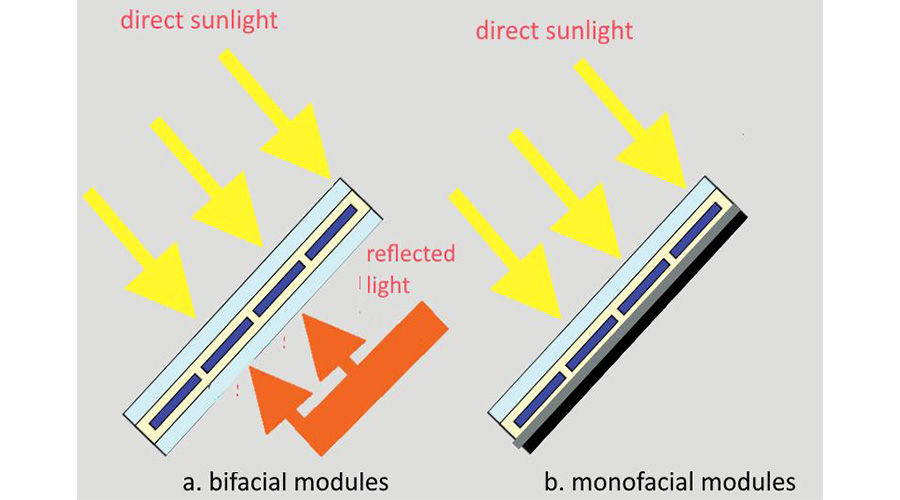
Bifacial Solar Cell Structure
The bifacial solar cell structure is made up of a single solar cell that’s able to capture light from the front and back. To enable this, manufacturers encase the solar cell into a kind of sandwich between two layers of glass or between glass and a backsheet. The glass enables light to enter the cell from the back.
In contrast, monofacial panels can only absorb light from the front, and their back is blocked by a reflective aluminium surface and an opaque back cover.
How Do Bifacial Solar Panels Work?
Bifacial solar panels work just like other solar panels – they capture sunlight and turn it into electricity. The biggest difference between bifacial and monofacial modules is that bifacial modules can capture sunlight from the front and back, while traditional monofacial solar panels can only capture light from the front.
Bifacial solar panels were initially designed for use in space and regions that get very little direct sunlight. In such cases, bifacial panels can capture more diffused or reflected sunlight than a single-faced solar panel and use it to generate electricity. An example would be the solar panels used in a remote research lab located in the Arctic.

Bifacial panels perform best when installed over reflective surfaces, such as fresh snow or white-painted ground. If placed over sand, the bifacial gain drastically falls to 11.8%, less than half the gain over highly reflective surfaces (24.8%). If installed over lawn or grass, the bifacial gain falls to less than a third of the optimum gain.
Pros & Cons Of Bifacial Solar Panels
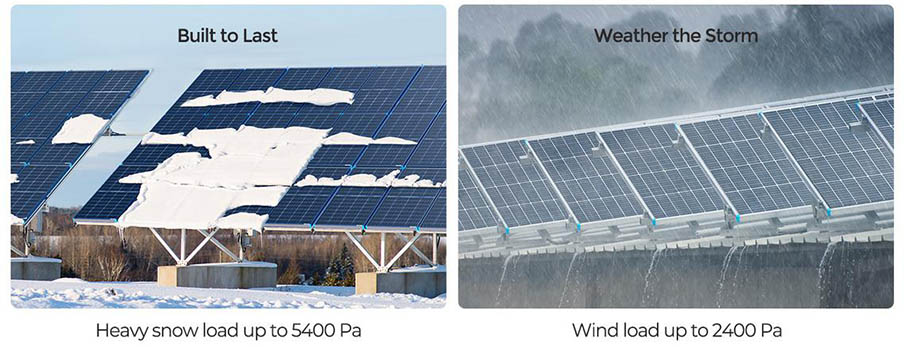
Benefits Of Bifacial Solar Panels
- More Efficient At Capturing Sunlight
Bifacial panels were initially made to work in the absence of direct sunlight, so they are pretty good at capturing sunlight at almost any angle. You can install them in different ways, including horizontally, vertically, and at an angle (e.g., 45 degrees). Provided that the back of the panel has enough space to receive reflected light.
- Increased Power Output
Bifacial solar panels can produce up to 30% more electricity than similarly-sized monofacial panels under the same conditions. For example, if a monofacial panel produces 200W, its bifacial version can produce up to 260W.
- Better Than Sun Tracking Solar Panel Installations
Sun-tracking systems produce more power by adjusting solar panels to follow the path of the sun. The only problem is the moving parts are bound to break down at some point. Bifacial solar panels also produce more power but don't have the problem of expensive moving parts that are bound to break down.
- Enhanced Strength & Durability
Bifacial solar panels, especially glass-glass panels, are made with high-quality materials and tend to have a longer lifespan and can withstand harsh weather conditions better than regular solar panels.
- Versatile Installations and Improved Aesthetics
Monofacial solar panels can only be installed at a predetermined angle. In contrast, bifacial solar panels can be installed in a number of creative ways; for example, you can use them for roofing your pergola, constructing a wall, and more. Bifacial panels also come in many forms, including frameless panels and see-through panels
- Better At Handling Extreme Weather
Renogy Bifacial Panels can handle heavy snow loads of up to 5400 Pa and wind pressure of 2400 Pa. Additionally, their double-sided nature ensures that they can continue producing electricity even if the front is totally covered by snow.
- Better Space Utilisation
You can generate up to 30% more power with bifacial panels while using the same amount of space.
Disadvantages Of Bifacial Solar Panels
- Increased Cost
Bifacial modules typically cost slightly more than monofacial panels because their production uses more raw materials.
- Twice the Maintenance Work
You need to clean the front and back of the bifacial panels. In addition, cleaning both sides of bifacial panels may be challenging on some installations. In contrast, you only need to clean the front side of the mono panels.
- More Challenging to Install
Glass-glass bifacial modules are heavier and therefore harder to carry and install. Their added weight also makes them challenging to carry or manoeuvre on the roof.
- Installation Needs a Reflective Surface
Bifacial panels need to be installed over a reflective surface, preferably painted white or silver, to help reflect light onto the back of the panels. Bifacial panels won’t perform as well when installed over a non-reflective surface such as a lawn, grass field, or artificial turf.
- May Violate Building Codes
In some regions, homeowners need special permission to install solar panels that protrude from the roof by more than 20 cm. It's recommended to check with your local authorities for information on solar permits and regulations.

Bifacial Solar Panels Cost
Are Bifacial Solar Panels Worth It?
Bifacial solar panels are worth it if you have the right conditions for them.
Bifacial solar panels provide a host of benefits, including:
● A higher electricity output compared to monofacial panels.
● Increased durability and resistance to harsh weather conditions.
● Visually appealing installations when used in multipurpose construction,
● Shorter ROI (return on investment) period.
But to enjoy these benefits, you need to be able to pay the additional cost and possess installation space on a reflective flat roof or ground.
Overall, bifacial solar panels make the most sense if you want to maximise your solar installation's power output or if you have limited installation space.
How Much Are The Bifacial Solar Panels?
The average cost per watt of bifacial solar panels is $1.80 AUD, which is slightly more than the average cost per watt of monofacial panels. For example, a 200-watt bifacial panel should cost around $360 AUD.
If you are unfamiliar with cost per watt, it’s basically a ratio that calculates how much a manufacturer charges for a single Watt.
You can use the following formula to calculate the cost per watt of different solar panels:
Cost per Watt = Total Cost / Wattage Capacity
For example, if we have a 285W bifacial panel that costs $287. The cost per watt is:
Cost per Watt = $287 / 285W = $1.007 per Watt
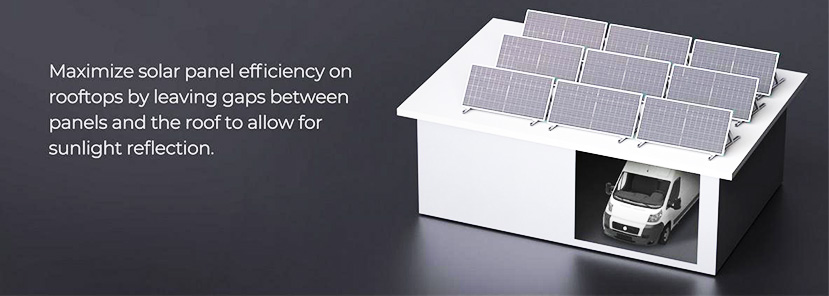
How Are Bifacial Modules Installed? Bifacial Solar Panel Installation
Here’s how to install bifacial solar panels:
Step 1: Prepare The Site Where The Panels Will Be Installed
Activities include cleaning the area, leveling the surface, painting surfaces white, and maybe pouring concrete footings.
Step 2: Install Racks and Mounting Equipment
Install the mounts, racks, or brackets depending on the type of installation you’ve planned.
Step 3: Install the Solar Panels
Once the racks and other support structures have been installed, you can place your bifacial solar panels onto them, making sure to follow the manufacturer's instructions.
Step 4: Connect Wiring
Connect the wiring according to the manufacturer’s installation and wiring instructions. Make sure all connections are secured tightly and insulated properly to avoid accidents.
Step 5: Test the System and Make Final Adjustments
Once the panels and connections are in place, test the system to ensure it is working as planned. Check the voltages, current draw, component temperatures, and power output to ensure the system is functioning as expected.
*The above installation process is a generalization for the most common installation types. The actual installation process may vary depending on your unique situation, local laws, and system size. We recommend consulting a professional installer for the most suitable installation instructions.
Here’s what you need to remember when carrying out your installation:
● The panels should ideally be at least 1 meter above the ground
● The back of the panels shouldn’t be covered or blocked
● The panels should be installed over a reflective surface
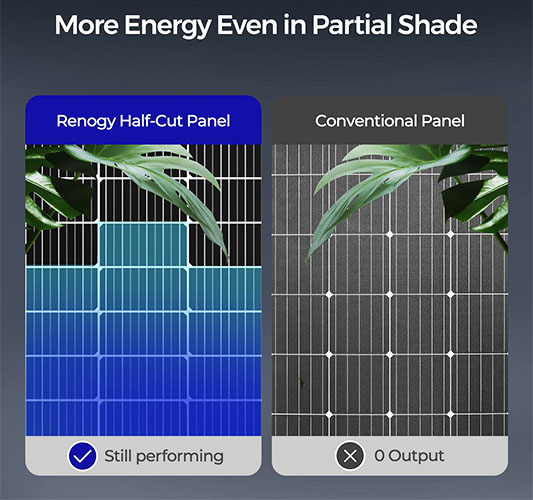
Differences between Bifacial and Monofacial
We are coming to the end of the article, so it’s the perfect time to compare bifacial and monofacial solar panels using all of our accumulated knowledge.
| Bifacial Module | Monofacial Module | |
| Light Capturing Faces | Front and Back | Front only |
| Efficiency and Performance | Can capture more sunlight and produce up to 30% more electricity. | Slightly less efficient at capturing light than bifacial modules. |
| Ease of Installation | Installation can be more challenging due to the need to leave the back of the panel exposed to light. | Installation is much simpler as the panels can be laid directly on top of a rooftop or mount. |
| Aesthetics | Comes in more visually appealing designs such as frameless solar panels that look great on pergolas and canopies. | Come in limited designs that are suitable for installations on rooftops and ground applications. |
| Cost | Typically cost more than monofacial panels due to their slightly higher production cost and performance. | Slightly more affordable than bifacial panels. |
| Installation Angle | Can be installed at different orientations to suit the aesthetic needs of the project. | Can only be installed at a fixed angle that ensures the panel is at a 90-degree incidence angle with the sun's rays. |
| Ideal Use | Most suitable for use on reflective, flat roofs or surfaces where the panels have over a metre clearance. | Suitable for use in a variety of applications. |
| Ideal Client | Large-scale utility applications such as solar farms. | Owners of installations on pitched roofs. |
Which Is Better, Bifacial Vs. Monofacial?
Are Bifacial Solar Panels Better?Yes, bifacial solar panels are better than monofacial solar panels as they outperform them in almost all categories. But that’s only if the right conditions are given.
Suppose bifacial panels don't get enough clearance, reflective surfaces, or flat installation space. In that case, bifacial panels are not much better than monofacial panels. In fact, sometimes monofacial panels are more suitable than bifacial panels. For example, monofacial panels are better for installation on pitched or angled rooftops.
Overall, the question of which module is better depends on the type of your installation, budget and purpose.
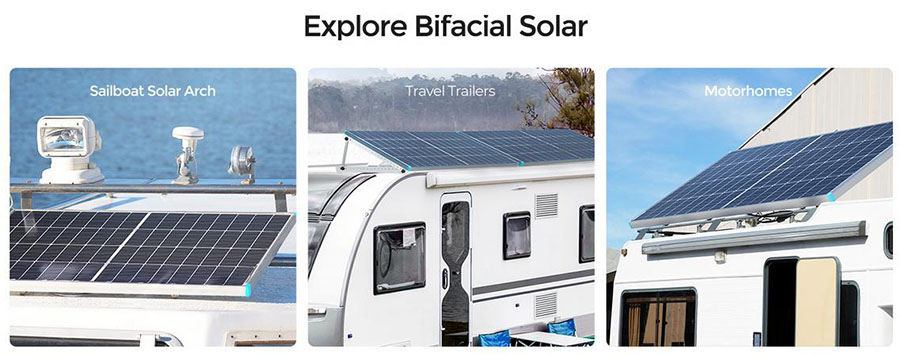
Bifacial Solar Panels For Sale ( Soon On Sale In Australia)
Are you looking for reliable bifacial solar panels in Australia?
Try out Renogy's bifacial solar panels and maximise your solar energy production. Our bifacial solar panels will soon be on sale in Australia. So you can upgrade to bifacial modules at minimum cost and experience the future of solar with Renogy.
Don't miss out on this promotion.







